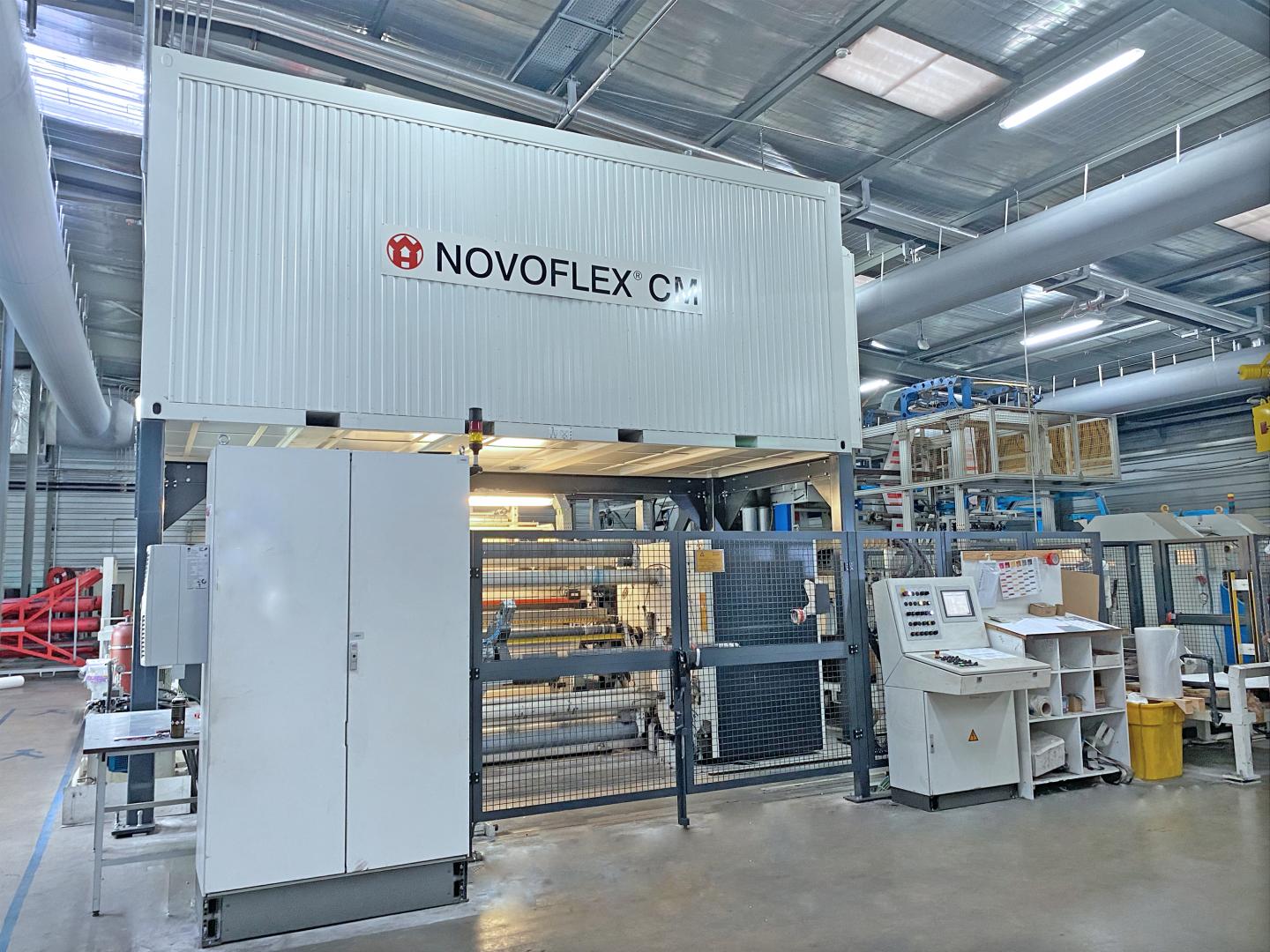Eco-Friendly Practices: Driving Modification with Bulk Container Recycling
Reliable Industrial Recycling Solutions for Sustainable Packaging: A Comprehensive Overview
In today's increasingly environmentally-conscious globe, the demand for lasting packaging solutions has actually never been greater. To fulfill this demand, companies across markets are actively looking for effective commercial recycling options. Navigating the complex landscape of sustainable product packaging can be testing without a thorough guide. That's where this detailed overview on reliable commercial recycling options for lasting packaging can be found in. By discovering key locations such as packaging material option, making for recyclability, executing recycling framework, working together with reusing companions, and tracking and measuring recycling success, this guide will certainly outfit you with the expertise and tools essential to make educated decisions and drive favorable adjustment within your company. Whether you're a product packaging specialist, sustainability manager, or simply thinking about the topic, this guide will provide valuable understandings and methods to aid you browse the globe of sustainable product packaging.
Packaging Product Option
The option of product packaging products plays a crucial function in guaranteeing the sustainability of industrial recycling options. The choice of materials is key in decreasing environmental effect and making best use of recycling performance when it comes to lasting packaging. Selecting the ideal materials can help in reducing waste generation, save resources, and promote a circular economy.
One essential factor to consider in packaging product option is recyclability - industrial metal packaging. Materials that can be easily reused and integrated back into the production cycle are preferred. As an example, materials like cardboard, paper, glass, and specific sorts of plastics can be reused several times without shedding their high quality. On the various other hand, products that are hard to reuse, such as non-recyclable composites or combined plastics, can produce obstacles for the recycling procedure and may wind up in burners or land fills.
An additional factor to consider is making use of eco-friendly and renewable products. Packaging made from renewable energies, such as plant-based plastics or biopolymers, can help in reducing dependency on nonrenewable fuel sources and reduce environment change. In addition, eco-friendly products break down normally gradually, minimizing the accumulation of waste in land fills.
Additionally, the weight and quantity of packaging products need to be lessened to minimize transportation expenses and energy consumption. Lightweight materials not only require less sources during production but likewise add to decrease carbon exhausts during transport.
Designing for Recyclability
In order to guarantee the recyclability of packaging products, thoughtful style is essential. Creating for recyclability involves producing product packaging that can be conveniently arranged, divided, and refined in reusing centers. One important element of developing for recyclability is the selection of products. Product packaging developers must prioritize using materials that are widely accepted for recycling and have actually developed recycling facilities. Products such as glass, aluminum, and certain sorts of plastic, like animal and HDPE, are commonly reused and need to be favored over materials that are costly or tough to reuse.
One more essential consideration in making for recyclability is the elimination of unneeded components or products. By reducing the number of layers, coatings, and additional elements, packaging can be made less complex and less complicated to recycle. Additionally, developers ought to intend to minimize the usage of combined products, as they can complicate the recycling procedure.

Implementing Recycling Framework
Effective implementation of recycling framework is essential for the success of commercial recycling options. Without appropriate infrastructure in position, the reusing procedure ends up being inefficient and ineffective, hindering the general objective of sustainable product packaging.
To execute reusing infrastructure efficiently, numerous vital elements require to be taken into consideration. There ought to be an efficient collection system that helps with the splitting up and why not try this out collection of recyclable materials. This can include marked recycling containers in public areas, in addition to partnerships with waste monitoring this hyperlink firms for curbside pickup and sorting.
As soon as accumulated, the recyclable materials require to be transferred to reusing centers in a timely way. This needs reliable logistics and transport networks, guaranteeing that the materials get to the appropriate centers without delay.
At the recycling centers, progressed sorting and processing technologies need to remain in location to separate different types of materials effectively. This includes using automated arranging devices, optical scanners, and manual sorting techniques.
In addition, there need to be a robust market need for recycled products. This can be attained via cooperations with suppliers and industries that make use of recycled materials in their manufacturing processes. Producing a stable market for recycled products incentivizes the recycling industry and promotes the round economy.
Collaborating With Recycling Allies

One secret aspect of teaming up with recycling companions is the establishment of clear interaction channels. It is very important to establish open lines of communication to assist in the exchange of details, updates, and comments. This permits both parties to remain informed concerning the progression of reusing initiatives and address any type of difficulties or problems that may develop.
Additionally, collaboration can include joint initiatives in creating and executing recycling programs. Reusing partners can provide beneficial understandings and assistance in developing effective collection systems and figuring out one of the most suitable recycling innovations. By collaborating, services and recycling companions can enhance the reusing process and minimize waste.
Furthermore, collaboration can extend beyond the functional aspects of reusing. It can also encompass campaigning for and education campaigns. By signing up with pressures, services and recycling partners can elevate recognition concerning the value of recycling and promote the adoption of lasting packaging techniques among customers and other stakeholders.
Monitoring and Measuring Recycling Success
To make sure the efficiency of industrial recycling options and the accomplishment of sustainable product packaging goals, it is critical for businesses and their reusing partners to develop a comprehensive system for monitoring and gauging recycling success (industrial packaging solutions). Determining top article and tracking recycling success permits companies to evaluate the impact of their reusing efforts, recognize locations for renovation, and established significant targets for future progress
One way to track recycling success is via using data collection and evaluation devices. By collecting data on the quantity of packaging waste generated, the portion of waste that is recycled, and the types of materials being recycled, services can acquire useful understandings right into their recycling efficiency. This information can then be assessed to recognize fads, patterns, and areas of inefficiency.
An additional essential aspect of tracking and determining reusing success is developing clear and standard metrics. This allows services to compare their efficiency versus sector benchmarks and track their progression with time. Metrics such as recycling prices, waste diversion rates, and greenhouse gas discharges can offer a measurable step of an organization's recycling success.

Conclusion
Finally, implementing reliable commercial recycling remedies for lasting product packaging requires careful consideration of product packaging product selection, developing for recyclability, carrying out reusing infrastructure, collaborating with reusing companions, and tracking and measuring reusing success. By integrating these practices, organizations can contribute to a much more lasting and environmentally-friendly technique to product packaging, minimizing waste and promoting the round economy.
By checking out essential locations such as product packaging material option, making for recyclability, implementing recycling framework, teaming up with recycling partners, and monitoring and determining recycling success, this overview will certainly outfit you with the expertise and devices needed to make enlightened choices and drive positive adjustment within your organization. Packaging designers need to prioritize the usage of products that are extensively accepted for reusing and have established reusing frameworks.Cooperation with reusing partners is important for the effective implementation of industrial reusing solutions and the success of sustainable packaging goals. By joining forces, businesses and recycling partners can elevate awareness regarding the significance of reusing and advertise the adoption of sustainable packaging techniques amongst consumers and various other stakeholders.
By collecting data on the quantity of packaging waste produced, the percent of waste that is recycled, and the types of products being reused, companies can gain important understandings right into their recycling performance.